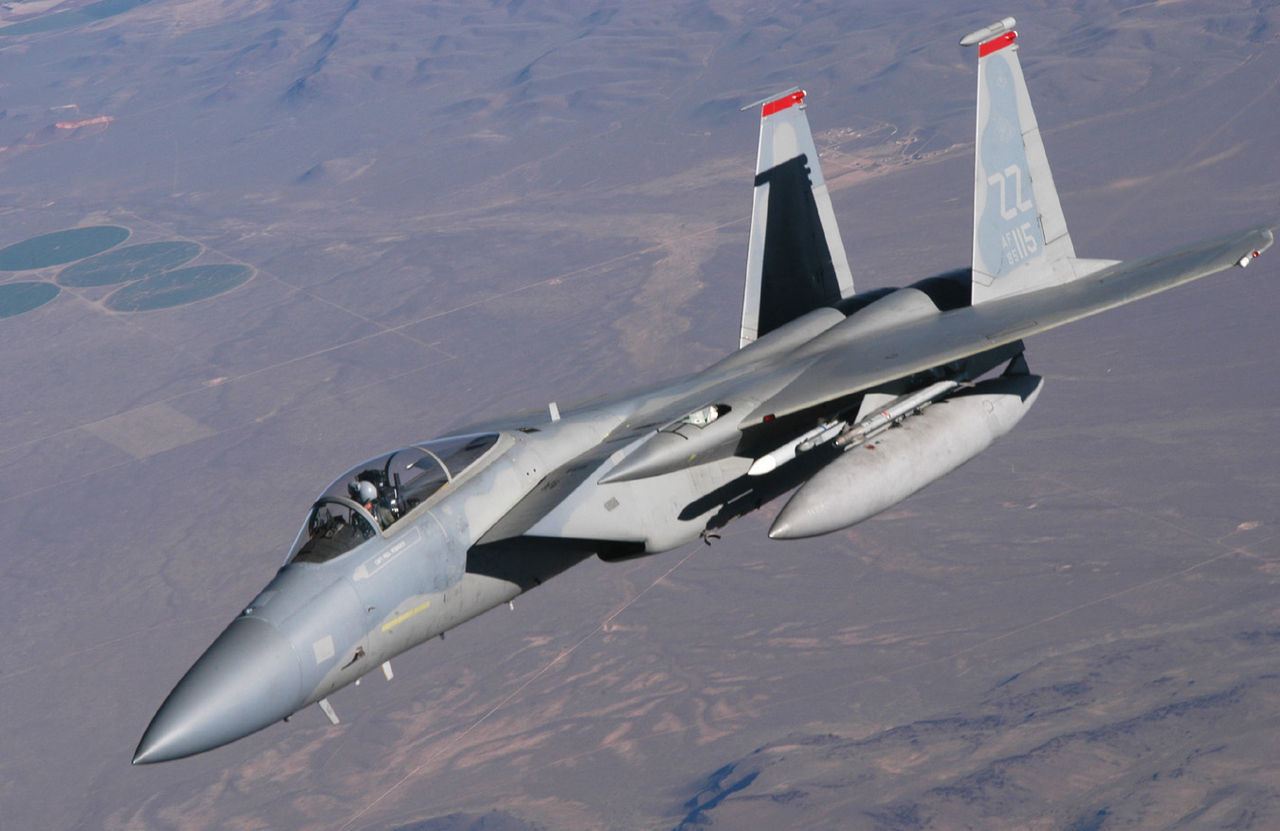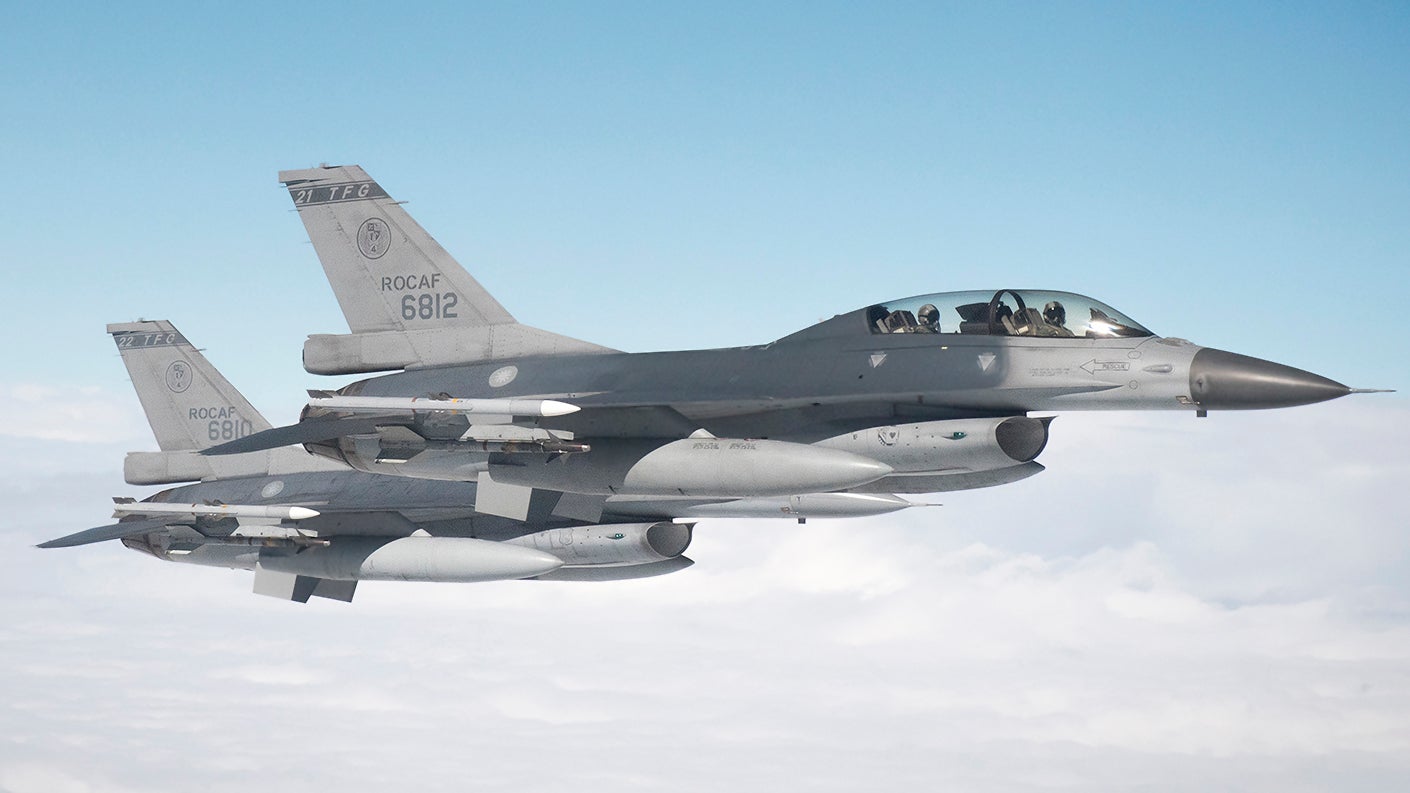A report from Bloomberg states that Taiwan’s recent request for 60 new-build advanced Block 70 F-16s will be approved by the Trump Administration. If this sale actually comes to pass, it would be in addition to the country’s 145 Block 20 F-16A/B aircraft that are currently being upgraded to the nearly identical F-16V standard. China has long said it draws a “red line” at the U.S. furnishing new-build advanced F-16 to Taiwan. If the deal is approved, it is sure to infuriate Beijing at a particularly contentious moment in U.S.-Chinese relations history. An ongoing and wide-ranging trade dispute, as well as increased tensions with its neighbors, its ongoing military buildup, the unending nuclear standoff with North Korea, and its island building campaign in the South China Sea are just some of the factors that have put major pressure on the already less than sturdy relationship between the two countries.
The deal to upgrade Taiwan’s aging fleet of F-16s came after the Obama Administration rejected Taipei’s wish to buy new F-16s. In reality, the upgrade gives Taiwan nearly the same capabilities of new-build F-16s, including the installation of AN/APG-83 SABR active electronically scanned array radars, fully upgraded cockpit displays and mission computers, Joint Helmet Mounted Cueing System (JHMCS), advanced defensive suite, data-links, and so on.

Because of the age of Taiwan’s F-16s, the deal also includes a structural upgrade and other airframe modification work. What it lacks is the F-16 Block 70’s 29,000-pound or even 32,000-pound thrust class engine, conformal fuel tanks, and the airframe enhancements that have come as a result of decades of F-16 production. Part of the $5.3B deal does include a study to see if the jet’s engines could be upgraded. So far, no operational F-16A/B has ever been upgraded with the more powerful engines.
The entire list of items in the sale was released by the U.S. Government. It reads:
“The Taipei Economic and Cultural Representative Office in the United States has requested a retrofit of 145 F-16A/B aircraft that includes sale of: 176 Active Electronically Scanned Array (AESA) radars; 176 Embedded Global Positioning System Inertial Navigation Systems; 176 ALQ-213 Electronic Warfare Management systems; upgrade 82 ALQ-184 Electronic Countermeasures (ECM) pods to incorporate Digital Radio Frequency Memory (DRFM) technology or purchase new ECM pods (AN/ALQ-211(V)9 Airborne Integrated Defensive Electronic Warfare Suites (AIDEWS) with DRFM, or AN/ALQ-131 pods with DRFM); 86 tactical data link terminals; upgrade 28 electro-optical infrared targeting Sharpshooter pods; 26 AN/AAQ-33 SNIPER Targeting Systems or AN/AAQ-28 LITENING Targeting Systems; 128 Joint Helmet Mounted Cueing Systems; 128 Night Vision Goggles; 140 AIM-9X SIDEWINDER Missiles; 56 AIM-9X Captive Air Training Missiles; 5 AIM-9X Telemetry kits; 16 GBU-31V1 Joint Direct Attack Munitions (JDAMs) kits; 80 GBU-38 JDAM kits; Dual Mode/ Global Positioning System Laser-Guided Bombs (16 GBU-10 Enhanced PAVEWAY II or GBU-56 Laser JDAM, 80 GBU-12 Enhanced PAVEWAY II or GBU-54 Laser JDAM, 16 GBU-24 Enhanced PAVEWAY III); 64 CBU-105 Sensor Fused Weapons with Wind-Corrected Munition Dispensers (WDMD); 153 LAU-129 Launchers with missile interface; upgrade of 158 APX-113 Advanced Identification Friend or Foe Combined Interrogator Transponders; and HAVE GLASS II applications. Also included are: ammunition, alternate mission equipment, engineering and design study on replacing existing F100-PW-220 engines with F100-PW-229 engines, update of Modular Mission Computers, cockpit multifunction displays, communication equipment, Joint Mission Planning Systems, maintenance, construction, repair and return, aircraft tanker support, aircraft ferry services, aircraft and ground support equipment, spare and repair parts, publications and technical documentation, personnel training and training equipment, U.S. Government and contractor engineering, technical, and logistics support, test equipment, site surveys, and other related elements of logistics support.”
Taiwan received the first of its upgraded F-16s, now designed F-16V, in October of 2018. The installation of upgrade kits is being done locally by the state-owned Aerospace Industrial Development Corporation (AIDC). You can read more about the deal in this past article of ours.
The move to upgrade Taiwan’s Vipers staved off what could have been a significant geopolitical spat between the U.S. and China. But that could all change if Taiwan ends up getting its entire F-16 fleet upgraded and at least 60 brand new late block F-16s on top of it.

From the first days of the Trump Administration, it was clear that the traditional walking of the fine line between being an ally to Taiwan and respecting America’s largest trading partner’s strategic concerns would be a thing of the past. Some have cheered this outright. Some have decried that not selling the same level of weaponry to Taiwan—supposedly a major democratic ally in a turbulent region—that the U.S. offers to Pakistan is akin to straight-up appeasement. Others warn that such weapons deals do little more than inflame the delicate and complex geopolitical relationship between the U.S., China, and Taiwan.
At the same time, China’s President Xi Jinping has made is crystal clear that reunification is not only China’s goal, but military force is on the table as a method to achieve that goal. These are ominous words for comparatively tiny Taiwan, an island country that is increasingly encircled by China’s growing military might with each passing day.
Taiwan and the U.S. plan to hold talks late this summer about how to best push back against China’s mounting push for reunification, a move that has angered Beijing. At the same time, the U.S. has stepped up its own military displays of force in the region, with its warships making multiple high-profile transits through the Taiwan Strait.
It will be very interesting to see how China reacts if the U.S. crosses their so-called red line and approves the F-16 sale, and how that act will impact the maelstrom of issues that currently hang over Chinese-U.S. relations.
There is no doubt that such an order will come as great news to Lockheed’s newly relocated F-16 plant in South Carolina. The line had called Fort Worth home for decades, but it was down-scaled and moved recently in order to make room for F-35 production and to achieve new efficiencies based on reduced output. 60 jets will provide years of work for the new production facility, which is currently fulfilling an order for Bahrain.
After the Obama Administration inked the deal for the upgraded F-16s and the election of Donald Trump, Taiwan had set its sights on acquiring the F-35, and the B model in particular. Its short takeoff and vertical landing capabilities fit Taiwan’s dispersed combat operations strategy during a major conflict when its air bases will be pummeled by Chinese ballistic and cruises missiles. But it was eventually decided the jets were too immature developmentally for Taiwan’s very pressing needs (they may have been all too right) and they would be very costly to acquire and sustain, let alone the hurdle of getting the sale cleared through Washingon. So pushing for the latest and greatest F-16 models became Taipei’s focus once again.

During an all-out conflict between Taiwan and China, many people question if any fighter aircraft type could really hold back the increasing might of the Chinese military. But others claim that leaving Taiwan without the weapons it needs to even have a shot of defending itself only invites Chinese aggression. With critical trade talks between the U.S. and China underway, we can’t underscore the negative timing of such a deal. Even if the Trump Administration were to approve the F-16 deal, one would think it could wait until after a trade deal is signed, or at least after some sort of preconceived internal deadline has passed.
Then again, maybe the Trump Administration is dangling the possibility of an advanced F-16 sale to Taiwan as a lever to get Beijing to capitulate to certain trade demands that they haven’t been willing to agree to even after many months of negotiations. But if that were the case, it would look terrible and set an awful precedent if the F-16 deal was first tacitly agreed to and then denied after a trade deal with China was done. It would literally convey a clear message that the U.S. is willing to sell its friends down the river for trade deals.

There may be another option that has been rumored in the past that may be far more possible now than before—selling or leasing Taiwan surplus F-15C/D Eagles that have been upgraded with AESA radars. These aircraft do not have a robust air-to-ground capability and keeping it that way could be part of the export deal, but they are far more capable than even the latest F-16 in the air-to-air realm. Such an arrangement may provide the right mix of capabilities and less-than-new hardware to keep China from absolutely losing it. It would also uphold the 1979 law that states the U.S. can only sell Taiwan weapons “of a defensive character.”
The F-15C/Ds can be upgraded with more air-to-air missile carriage capabilities and even conformal fuel tanks. This would provide Taiwan with a near ideal asset for swatting down large volumes of Chinese fighters, drones, and cruise missiles during a conflict while also being able to stay on station for hours at a time over the Taiwan Strait. In other words, with upgraded F-15C/Ds, Taiwan gets the most powerful air-to-air fighter radar in the world, persistence, and the magazine depth needed to at least make a dent when it comes to defending the island against a Chinese onslaught.

Surplus F-15C/Ds are in limited supply and none have the new radars. But if the USAF gets its new F-15X fighters, selling some of the surplus F-15C/D models, along with a structural and technological upgrade, to Taiwan would make sense.
Augmenting that purchase with surplus AV-8B Harriers from the Marine Corps, which can also be modified to carry modular AESA radars, would give Taiwan an aircraft that is proven, efficient, and extremely effective when it comes to highly dispersed combat operations. You can read more about the USMC’s soon to be surplus Harriers here.
So, there may be additional potential options for Taiwan, some of which are more relevant now than ever.
Regardless, it seems increasingly clear that the ‘more fighters for Taiwan’ issue is going to become a major news item in the weeks to come.
Contact the author: Tyler@thedrive.com
